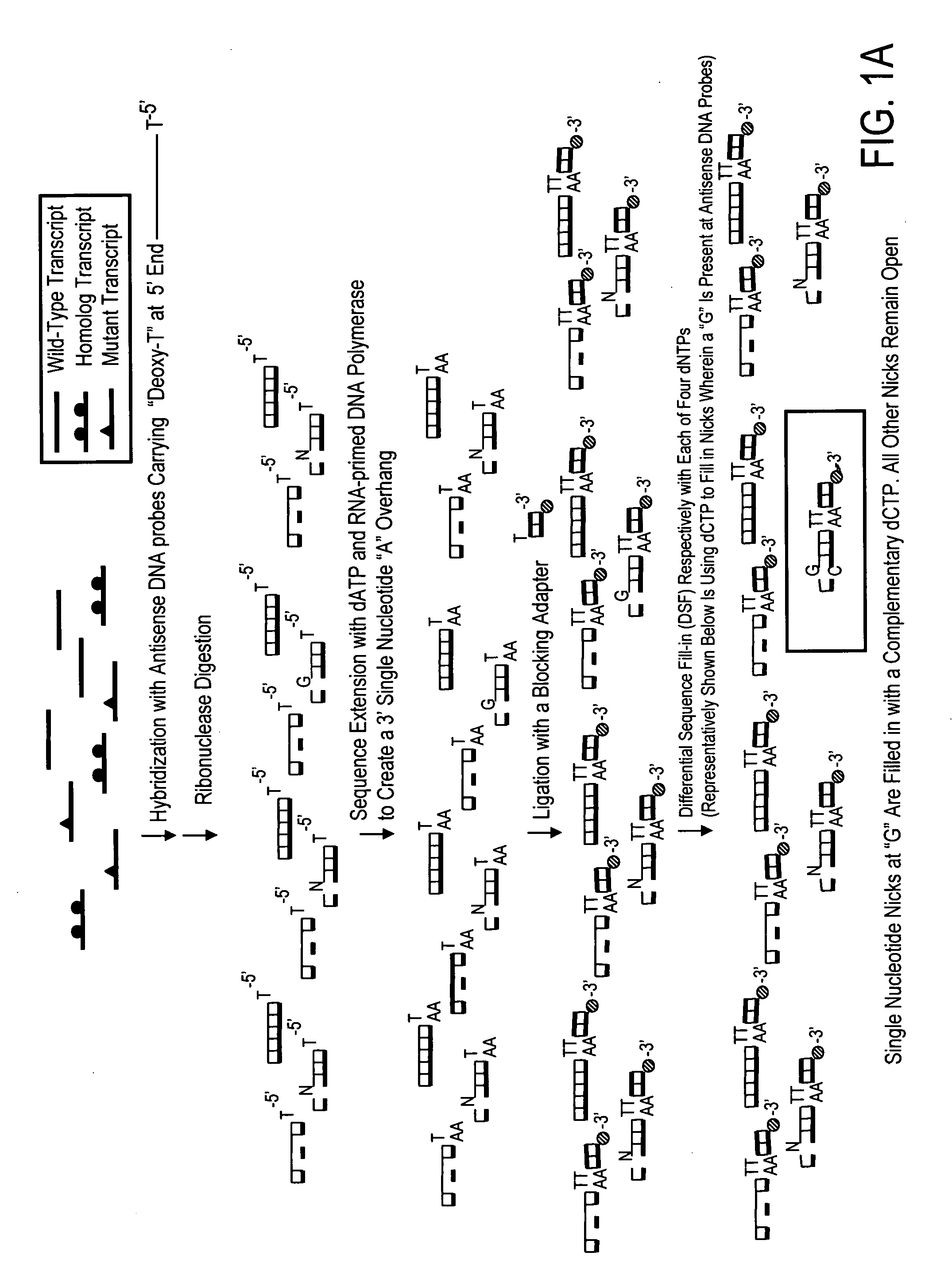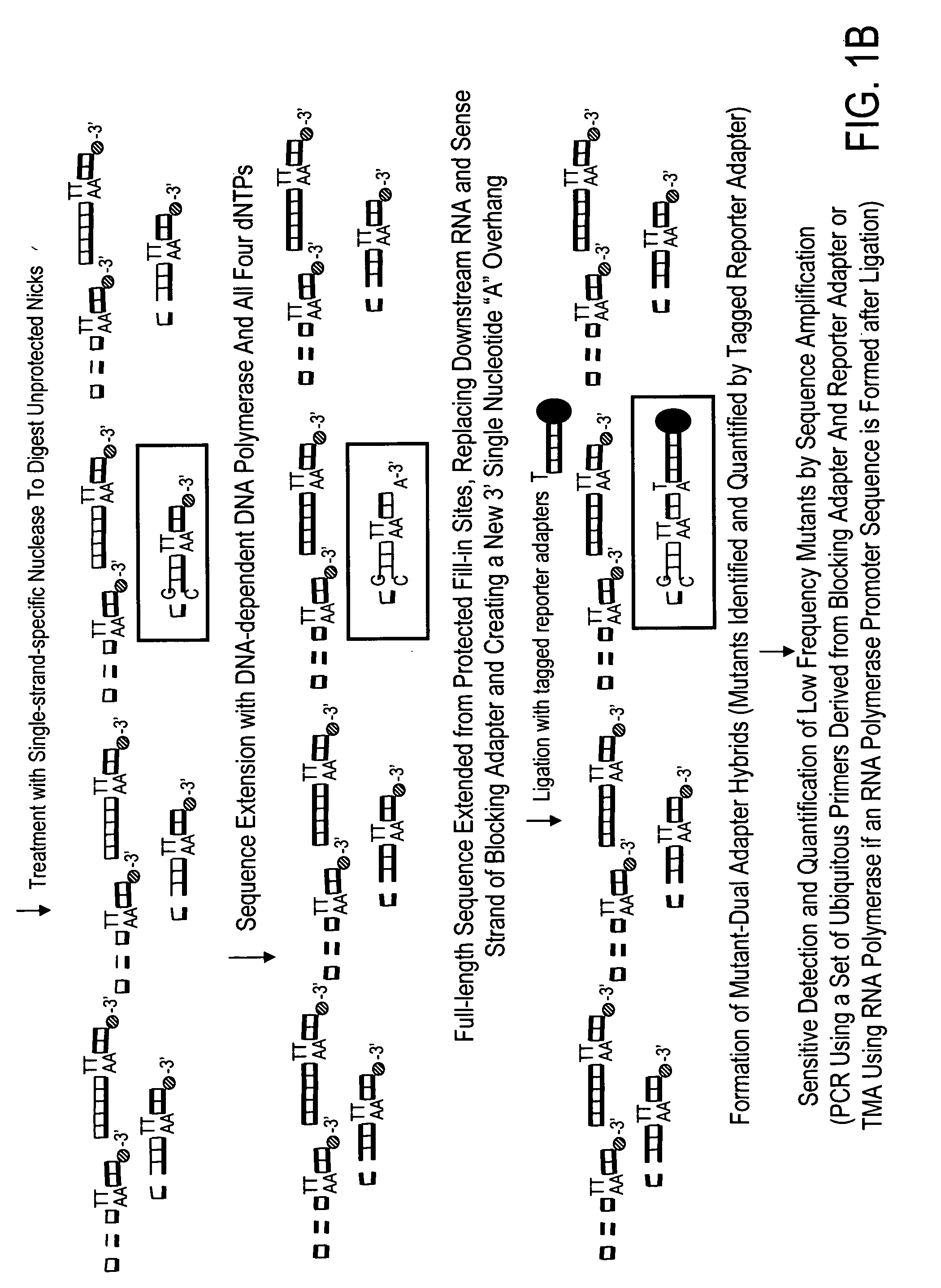High throughput mutation screening methods and kits using a universalized approach - differential sequence fill-in (dsf)-enabled sequential adapter ligation and amplification
a technology of differential sequence filling and mutation screening, which is applied in the field of high throughput mutation screening methods and kits using a universalized approachdifferential sequence filling, can solve the problems of difficult to achieve the goal, difficult to detect multiple mutations in infectious microorganisms, and require laborious multiple amplification and sequencing, etc., to achieve the effect of convenient simultaneous detection of a multitude of multiples, prohibiting further ligation, and easy discrimination
- Summary
- Abstract
- Description
- Claims
- Application Information
AI Technical Summary
Benefits of technology
Problems solved by technology
Method used
Image
Examples
example
A Streptavidin-Captured Mutation Assay for Simultaneous Analysis of Multiple Different Genes by DSF-Enabled Sequential Adapter Ligation and Amplification
[0039]The present example illustrates one non-limiting application of the present disclosure for simultaneous screening of a multitude of multiple different genes for the presence of a mutation or mutations by the use of a streptavidin-coated microtiter plate. RNA samples are harvested from eight normal blood samples as negative controls and ten neoplastic cell lines of various origin: NCI-H460 lung cancer cells, HCT-15 colon cancer cells, SW-480 colon cancer cells, MCF7 breast cancer cells, KG-1 myeloid leukemia cells, HL-60 myeloid leukemia cells, KBM7 myeloid leukemia cells, B15 lymphoblastic leukemia cells, HUT-78 T-cell leukemia cells, and Ryan B-cell lymphoma cells. Targets of interest are the mutation predilection regions of nine different genes: K-ras, TP53, Erb-b2, VEGFR3, MSH6, CHEK2, BRIP1, LKB1, and PIK3CA. This streptav...
PUM
| Property | Measurement | Unit |
|---|---|---|
| pH | aaaaa | aaaaa |
| pH | aaaaa | aaaaa |
| concentrations | aaaaa | aaaaa |
Abstract
Description
Claims
Application Information
 Login to View More
Login to View More - R&D
- Intellectual Property
- Life Sciences
- Materials
- Tech Scout
- Unparalleled Data Quality
- Higher Quality Content
- 60% Fewer Hallucinations
Browse by: Latest US Patents, China's latest patents, Technical Efficacy Thesaurus, Application Domain, Technology Topic, Popular Technical Reports.
© 2025 PatSnap. All rights reserved.Legal|Privacy policy|Modern Slavery Act Transparency Statement|Sitemap|About US| Contact US: help@patsnap.com



